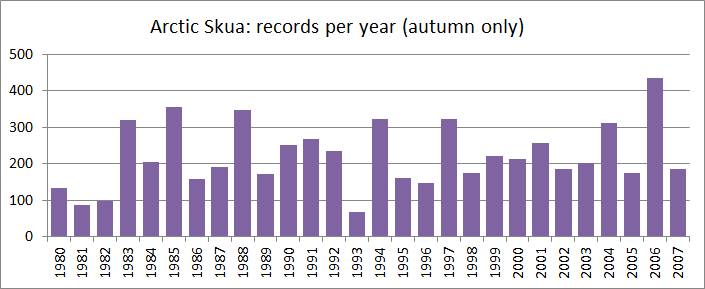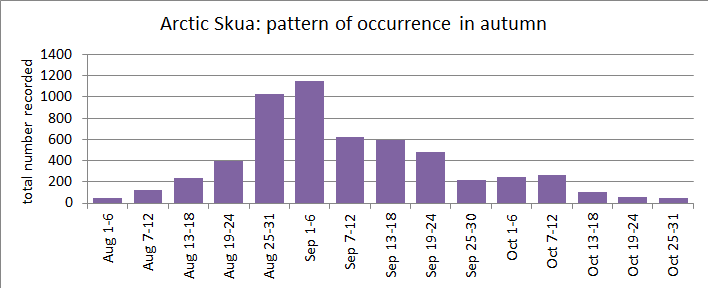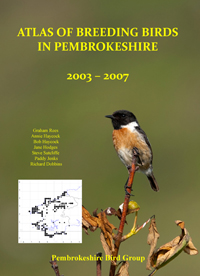Stercorarius parasiticus
The number of birds involved each autumn varied, extremes being 67 in 1993 and 355 in 1985. Differing breeding success no doubt played a part in this variability but changing weather systems seem to have been the main factor.
Autumn totals at Strumble Head, 1980 – 2007.

Passage has been recorded from July to December, at Strumble Head between 1980 and 2006, a total of 24 being seen in July, 32 in November and 5 in December. Totals for the months August to October, expressed in six day periods were:

Light to moderate winds with a westerly component prevailed in most autumns. It was thought that some of the Arctic Skuas travelling southwards through the Irish Sea were drifted eastwards into Cardigan Bay by these westerly winds. When the skuas encountered the north Pembrokeshire coast they followed it in a westerly direction, so as to gain sea room for their continued southward migration. When south–westerly gales occurred larger numbers appeared in Cardigan Bay, presumed to have been blown there from the sea area south of the Irish Sea. When the wind veered to between west and north before moderating, these birds were able to make their way back out to sea, many of them passing close in to Strumble Head. It was such a weather system that resulted in the largest day total recorded when 103 passed on the 3rd September 1983.
Light to moderate north–east winds predominated in the autumn of 1993 and few Arctic Skuas were seen, most of those that did pass were during short interludes of westerly winds. Strong winds from due east dominated the autumn of 2003 when a total of 203 Arctic Skuas was logged passing. Such winds could be expected to drift southward travelling birds away from Cardigan Bay, so it seems likely that those seen at Strumble Head had arrived by flying overland from the North Sea assisted by the following wind.
Observational evidence indicates that Arctic Skuas are diffusely spread once they have cleared the north coast of the county. Daily observations from The Smalls throughout the autumns of 1983 and 1984 recorded far fewer birds than passed Strumble Head on the same dates. Offshore watchers using boats going as far out as the Celtic Deep only occasionally encountered one or two Arctic Skuas, as was the case with shore based watchers on the west and south coasts of the county and on the offshore islands. At Skokholm the mean autumn total from 1953 to 2003 was seven birds.
Graham Rees.
(Covers records up to and including 2007).
 Sunday, October 27, 2013 at 10:30AM
Sunday, October 27, 2013 at 10:30AM  1949 BoP in
1949 BoP in  Arctic Skua
Arctic Skua 



